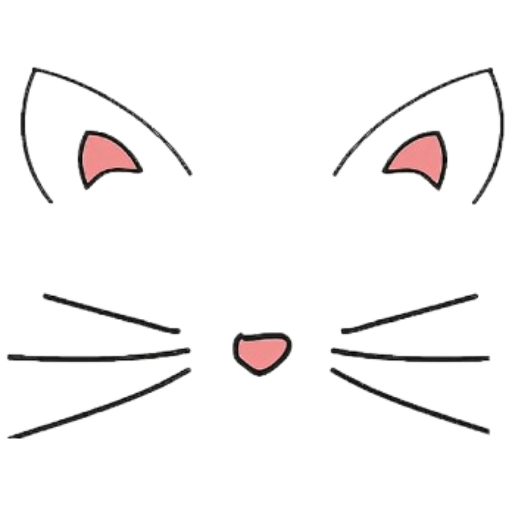The Feline Innovators of Agriculture: Cats and Their Influence on Farming Practices
- One Comment
In the realm of agriculture, an unexpected contributor to farming practices has been quietly making a significant impact—cats. For centuries, these feline companions have played a crucial role in the agricultural landscape, influencing both ancient and modern farming methods. Far from being mere pest controllers, cats have woven themselves into the tapestry of agricultural success stories, contributing to both the preservation and enhancement of farming practices across the globe.
Historically, the relationship between cats and agriculture dates back to ancient Egypt, where cats were revered not only as deities but also as vital protectors of grain stores. Their presence in granaries served to deter rodents, safeguarding the food supply and ensuring the stability of the region’s agricultural economy. This symbiotic relationship between cats and farmers was so valued that harming a cat was considered a punishable offense, highlighting the importance of these felines in maintaining food security.
As agriculture evolved, so did the role of cats. In the Middle Ages, European farmers relied heavily on cats to control the rat and mouse populations that threatened their harvests. This practical partnership continued to flourish, with cats becoming a staple presence on farms across the continent. Their keen hunting instincts and ability to navigate tight spaces proved invaluable in protecting crops and stored produce, thereby reducing losses and increasing yield.
In contemporary times, the agricultural role of cats has expanded beyond pest control. Modern farmers have discovered that cats can contribute to sustainable farming practices in unexpected ways. Their presence can help maintain a balanced ecosystem by controlling pest populations naturally, reducing the need for chemical pesticides that can harm the environment. This eco-friendly approach aligns with the growing trend towards organic farming and sustainable agriculture, where maintaining biodiversity is crucial.
Moreover, the presence of cats on farms has been shown to improve the well-being of farmers themselves. Studies have indicated that interaction with cats can reduce stress and increase overall mental health. This emotional support is particularly beneficial in the high-pressure environment of farming, where long hours and unpredictable weather can take a toll on mental health. The companionship of a cat can provide much-needed comfort and stability, enhancing the quality of life for those working in the agricultural sector.
Cats have also found a niche in agricultural research. In recent years, scientists have begun studying the behavior and impact of feral cat populations on farms to better understand their role in agricultural ecosystems. This research aims to develop strategies that optimize the benefits of cats in farming while addressing potential challenges, such as the impact on local wildlife. By integrating feline behavior studies into agricultural research, scientists hope to enhance farm management practices and promote more harmonious human-animal interactions.
As we look to the future, the partnership between cats and agriculture is poised to grow even stronger. With advancements in technology, such as GPS collar tracking and behavioral analysis, farmers can gain deeper insights into the movements and habits of their feline allies. This data-driven approach can help farmers optimize their pest management strategies and further integrate cats into sustainable farming models.
In conclusion, the influence of cats on agriculture is a testament to the diverse ways in which these remarkable animals can contribute to human endeavors. From ancient grain stores to modern sustainable farms, cats have consistently played a pivotal role in shaping agricultural practices. As we continue to explore the potential of this unique partnership, it becomes increasingly clear that the humble farm cat is more than just a mouser—it is an integral part of the agricultural ecosystem, enriching the lives of farmers and contributing to the sustainability of our food systems.

In the realm of agriculture, an unexpected contributor to farming practices has been quietly making a significant impact—cats. For centuries, these feline companions have played a crucial role in the agricultural landscape, influencing both ancient and modern farming methods. Far from being mere pest controllers, cats have woven themselves into the tapestry of agricultural success stories, contributing to both the preservation and enhancement of farming practices across the globe.
Historically, the relationship between cats and agriculture dates back to ancient Egypt, where cats were revered not only as deities but also as vital protectors of grain stores. Their presence in granaries served to deter rodents, safeguarding the food supply and ensuring the stability of the region’s agricultural economy. This symbiotic relationship between cats and farmers was so valued that harming a cat was considered a punishable offense, highlighting the importance of these felines in maintaining food security.
As agriculture evolved, so did the role of cats. In the Middle Ages, European farmers relied heavily on cats to control the rat and mouse populations that threatened their harvests. This practical partnership continued to flourish, with cats becoming a staple presence on farms across the continent. Their keen hunting instincts and ability to navigate tight spaces proved invaluable in protecting crops and stored produce, thereby reducing losses and increasing yield.
In contemporary times, the agricultural role of cats has expanded beyond pest control. Modern farmers have discovered that cats can contribute to sustainable farming practices in unexpected ways. Their presence can help maintain a balanced ecosystem by controlling pest populations naturally, reducing the need for chemical pesticides that can harm the environment. This eco-friendly approach aligns with the growing trend towards organic farming and sustainable agriculture, where maintaining biodiversity is crucial.
Moreover, the presence of cats on farms has been shown to improve the well-being of farmers themselves. Studies have indicated that interaction with cats can reduce stress and increase overall mental health. This emotional support is particularly beneficial in the high-pressure environment of farming, where long hours and unpredictable weather can take a toll on mental health. The companionship of a cat can provide much-needed comfort and stability, enhancing the quality of life for those working in the agricultural sector.
Cats have also found a niche in agricultural research. In recent years, scientists have begun studying the behavior and impact of feral cat populations on farms to better understand their role in agricultural ecosystems. This research aims to develop strategies that optimize the benefits of cats in farming while addressing potential challenges, such as the impact on local wildlife. By integrating feline behavior studies into agricultural research, scientists hope to enhance farm management practices and promote more harmonious human-animal interactions.
As we look to the future, the partnership between cats and agriculture is poised to grow even stronger. With advancements in technology, such as GPS collar tracking and behavioral analysis, farmers can gain deeper insights into the movements and habits of their feline allies. This data-driven approach can help farmers optimize their pest management strategies and further integrate cats into sustainable farming models.
In conclusion, the influence of cats on agriculture is a testament to the diverse ways in which these remarkable animals can contribute to human endeavors. From ancient grain stores to modern sustainable farms, cats have consistently played a pivotal role in shaping agricultural practices. As we continue to explore the potential of this unique partnership, it becomes increasingly clear that the humble farm cat is more than just a mouser—it is an integral part of the agricultural ecosystem, enriching the lives of farmers and contributing to the sustainability of our food systems.



1 thought on “The Feline Innovators of Agriculture: Cats and Their Influence on Farming Practices”
It’s fascinating to learn about the unique and valuable role cats play in enhancing agricultural practices!